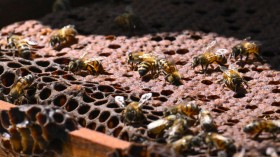Astronomers have identified a new structure in the Milky Way galaxy called "bone".
The "bone" structure is a collection of gas and dust that contains material worth around 100,000 suns.
Lead author Alyssa Goodman of the Harvard-Smithsonian Center for Astrophysics (CfA) and her team found the galactic bone while they were studying a dust cloud nicknamed "Nessie" using data from NASA's Spitzer space telescope.
The Milky Way galaxy is a spiral galaxy which possesses two spiral arms. There are other spiral galaxies that have displayed structures of internal bones or endoskeletons. But this is the first time that a "bone" structure has been observed in our galaxy.
Based on observations, Goodman and her colleagues found long skinny features extending between the galaxies' spiral arms. The skinny features are not as massive as the spiral arms that wrap around the disks. Computer simulations of the galaxy formation showed a web of filaments within spiral disks. Scientists believe that the newly-found structure is one of these "bone-like" filaments.
The central part of the "Nessie" bone was discovered in 2010 by researcher James Jackson from Boston University.
The new study suggests that the "bone" is possibly eight times longer than what was claimed earlier by Jackson. According to Goodman, the slender bone is more than 300 light-years long, but is just 1 or 2 light-years wide. This makes it look more like a cosmic snake.
"This bone is much more like a fibula - the long skinny bone in your leg - than it is like the tibia, or big thick leg bone," Goodman said in a statement.
"It's possible that the 'Nessie' bone lies within a spiral arm, or that it is part of a web connecting bolder spiral features. Our hope is that we and other astronomers will find more of these features, and use them to map the skeleton of the Milky Way in 3-D," she added.
The study findings were presented Tuesday in a press conference at a meeting of the American Astronomical Society in Long Beach, Calif.
© 2024 NatureWorldNews.com All rights reserved. Do not reproduce without permission.





